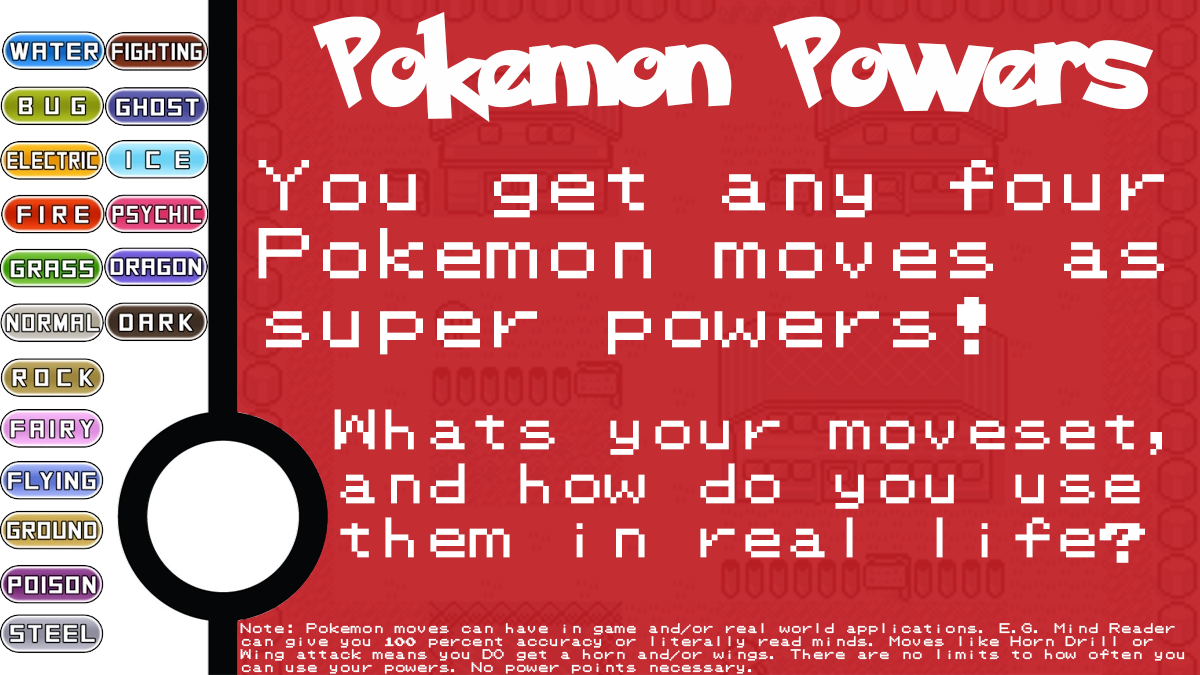

The urbanization of his town drove away wildlife and he and others living in the area were eventually unable to collect insects. Throughout his early life, Tajiri saw his rural, nature-filled hometown ( Machida, Tokyo) transform into an urban center. Other influences on the concept include Ultraman, anime and playing video games in general. The concept of the Pokémon universe, in both the video games and the general fictional world of Pokémon, stems most notably from Tajiri's childhood hobby of insect collecting. The word "Pokémon" is a romanized contraction of the Japanese brand Pocket Monsters ( ポケットモンスター, Poketto Monsutā). The creatures that inhabit the world of Pokémon are also called Pokémon. Satoshi Tajiri-who later founded Game Freak-conceived the premise of Pokémon in general in 1989, when the Game Boy was released. Generation V is a notable exception, as Victini is the first Pokémon in the Unova Pokédex. The encyclopedias follow a general ordering: starter Pokémon are listed first, followed by species obtainable early in the respective games and are concluded with Legendary and Mythical Pokémon. For example, the Johto Pokédex, Generation II, covers the 100 species introduced in Gold and Silver in addition to the original 151 species. The National Pokédex is subdivided into regional Pokédex series, each revolving around species introduced at the time of their respective generations along with older generations. The 1010 Pokémon are organized by their number in the National Pokédex-an in-game electronic encyclopedia that provides various information on Pokémon. Each Generation is also marked by the addition of new Pokémon: 151 in Generation I in the Kanto region, 100 in Generation II in the Johto region, 135 in Generation III in the Hoenn region, 107 in Generation IV in the Sinnoh region, 156 in Generation V in the Unova region, 72 in Generation VI in the Kalos region, 88 in Generation VII in the Alola and Kanto regions, 96 in Generation VIII in the Galar and Hisui regions and 110 in Generation IX in the Paldea region.ĭue to the large number of Pokémon, listing of each species is divided into articles by generation. Generation I refers to Red, Green, Blue and Yellow Generation II refers to Gold, Silver and Crystal Generation III refers to Ruby, Sapphire, FireRed, LeafGreen and Emerald Generation IV refers to Diamond, Pearl, Platinum, HeartGold and SoulSilver Generation V refers to Black, White, Black 2 and White 2 Generation VI refers to X, Y, Omega Ruby and Alpha Sapphire Generation VII refers to Sun, Moon, Ultra Sun, Ultra Moon, Let's Go, Pikachu! and Let's Go, Eevee! Generation VIII refers to Sword, Shield, Brilliant Diamond, Shining Pearl and Legends: Arceus and Generation IX refers to Scarlet and Violet.
ALL POKEMON MOVES LIST SERIES
The vast array of creatures is commonly divided into "Generations", with each division primarily encompassing new titles in the main video game series and often a change of handheld platform. Sugimori and Hironobu Yoshida lead the team and determine the final designs. However, by 2013 a team of 20 artists worked together to create new species designs. Originally, only a handful of artists led by Ken Sugimori designed Pokémon.

Many Pokémon are capable of evolving into more powerful species, while others can undergo form changes and achieve similar results. The designs for the multitude of species can draw inspiration from anything such as animals, plants and mythological creatures. Conceived by Satoshi Tajiri in early 1989, Pokémon (or Pocket Monsters) are fictional creatures that inhabit the fictional Pokémon World. The Pokémon franchise revolves around 1010 fictional species of collectible monsters, each having unique designs, skills and powers.

The first 150 Pokémon as they appear in Pokémon Stadium, starting with Bulbasaur in the top left corner and ending with Mewtwo in the bottom right corner.


 0 kommentar(er)
0 kommentar(er)
